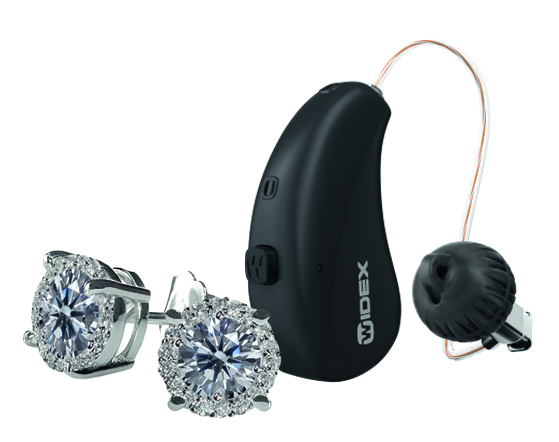Today’s medical devices are constantly evolving thanks to advances in technology, and hearing aids are no different. A hearing aid purchased a decade ago may have been the latest at the time, but if you’re still using that hearing aid, you are likely missing out on some of the latest advances in hearing aid technology—advances that cannot only make your hearing aid more effective, but may improve the convenience of wearing hearing aids and your quality of life.
What are some of the must-haves you should look for if you’re in the market for new hearing aids?
1. Bluetooth Technology—Originally Bluetooth technology was developed to help us connect our keyboard, mouse and monitor to our computers without a tangle of wires or cables. When originally developed, it was groundbreaking! Today, it’s a routine feature in all kinds of technology, from speakers to phones to hearing aids.
In most cases, Bluetooth devices have a fairly short range, typically 30 to 40 feet. When you use a Bluetooth device, it transfers information into a coded signal and broadcasts it out to other Bluetooth-enabled devices within range. The other devices can then pick up on the signal.
If your hearing aids are Bluetooth-compatible, you can connect to certain Bluetooth enabled devices, like a smartphone. You can even program your hearing aids to connect directly to your cell phone, and you can have a conversation via your hearing aids. This makes communication convenient, plus when you can hear a conversation through your hearing aids, the signal is much clearer than when listening to a conversation on a phone using one ear.
Some hearing aid manufacturers now have hearing aids that utilize Bluetooth technology compatible with Apple and Android phones. The more sophisticated hearing aids have a streamer built in, so no additional devices, streamers or wires are necessary in order to connect from your hearing aids to other devices, like your phone. All you have to do is pair the devices if they are compatible.
2. Rechargeable Hearing Aids—Rechargeable hearing aids have made significant advances recently. Plus, they appeal to those concerned with the environment. Though they would seem to be a “greener” option, the batteries and packaging used in traditional zinc batteries are recyclable.
That said, rechargeable hearing aids are still very appealing, especially for those who are tired of dealing with tiny hearing aid batteries. The pros of rechargeable hearing aids are that they don’t require batteries, which have to be purchased routinely, and they typically can be re-charged overnight while you sleep.
But one of the cons is that in most cases there’s no back-up power. If you forget your charger, or you forget to charge your hearing aids the night before, you’re out of luck. You also need access to a ready power source to charge them, so if you camp or hike, rechargeables might not be a good option. Rechargeables may also cost more up front because you have to purchase the charger. Over time, the cost of the batteries and the cost of the charger are very similar until replacement rechargeable batteries are necessary. Be sure to discuss your lifestyle, budget and needs with your audiologist before purchasing rechargeables to be sure they are the right choice for you.
3. Noise Reduction—One of the main complaints from hearing aid users is being able to hear in noisy situations, like busy restaurants. To counter that, many hearing aids use noise reduction algorithms which can help improve speech and hearing in noise. Noise reduction operates in the background, without you even being aware of it, but it can definitely make a difference in how well you hear and what you hear, especially in difficult listening situations. If you are often in these situations, talk with your audiologist to determine which hearing aid might be best for you. Although nothing completely erases background noise, the noise management algorithms continue to improve.
4. Directional Microphones—Newer digital hearing aids typically include two microphones, helping detect which direction a sound is coming from. Adaptive directional microphones are designed to prioritize speech coming from in front when other sound may interfere, but the microphone power can be shifted. For example, let’s say you’re driving and your grandkids are in the back seat. If your hearing aids are equipped with directional microphones, using an app compatible with the hearing aids, you can shift the microphone power to pick up more sound coming from behind you. This may help you hear speech better in this type of complex listening situation.
5. Artificial Intelligence—Some advanced hearing aids are equipped with artificial intelligence (AI) that helps learn your listening preferences, targeting the sounds you need and want to hear, making those sounds more prominent. It also helps in learning your listening preferences.
For example, when seated in a noisy room with a friend or spouse, hearing aids with AI can automatically shift to provide more comfort or more clarity to help you hear and communicate your best. These hearing aids also can remember your preferred settings and automatically adjust when you enter locations you often visit.
Many of the latest hearing aids come equipped with some or all of these features, depending on the manufacturer and cost. An audiologist should be aware of the wide range of hearing aids and features available today. Be sure to ask your audiologist if you would benefit from any or all of these features, and which they recommend for your hearing loss, lifestyle and budget.



